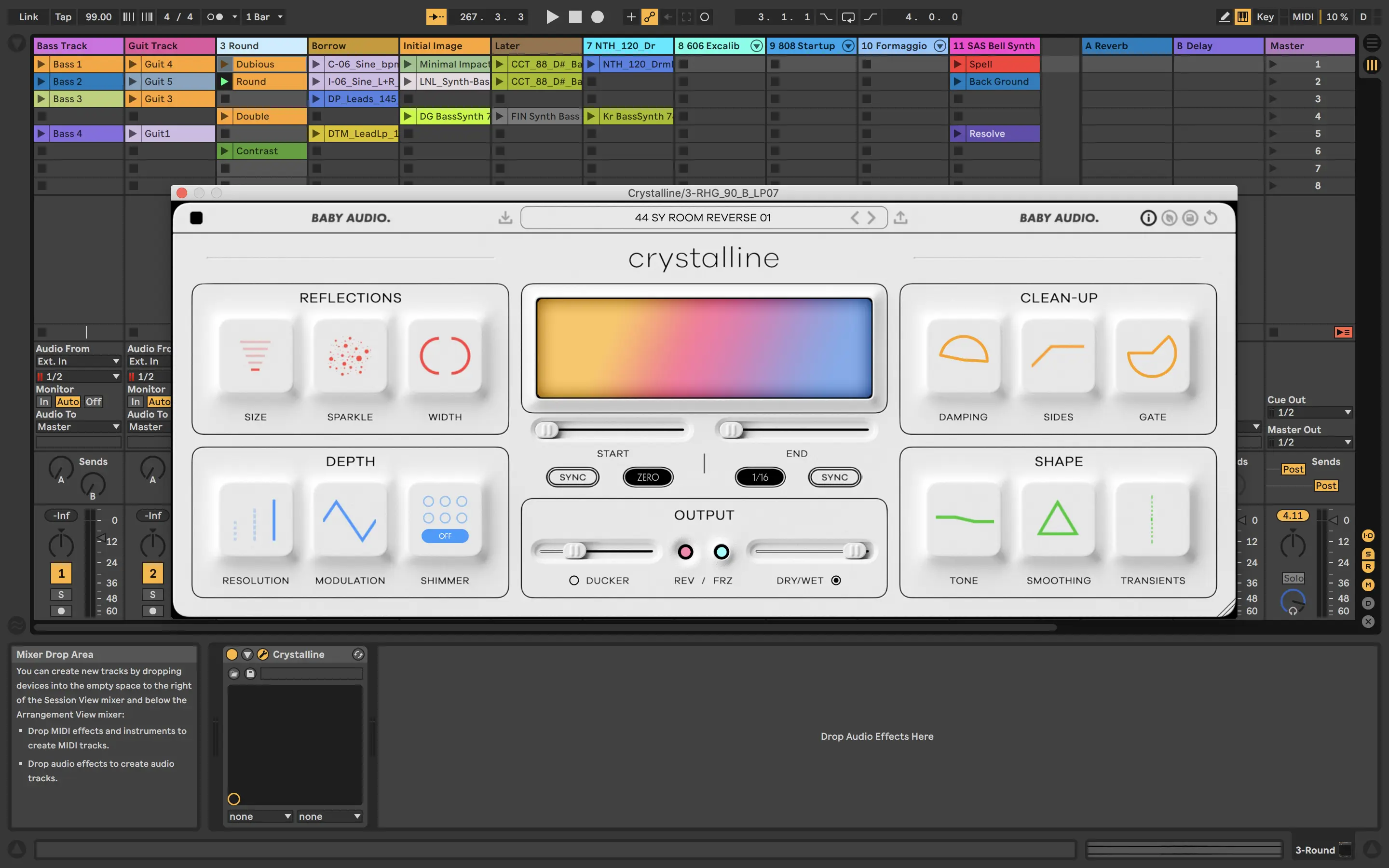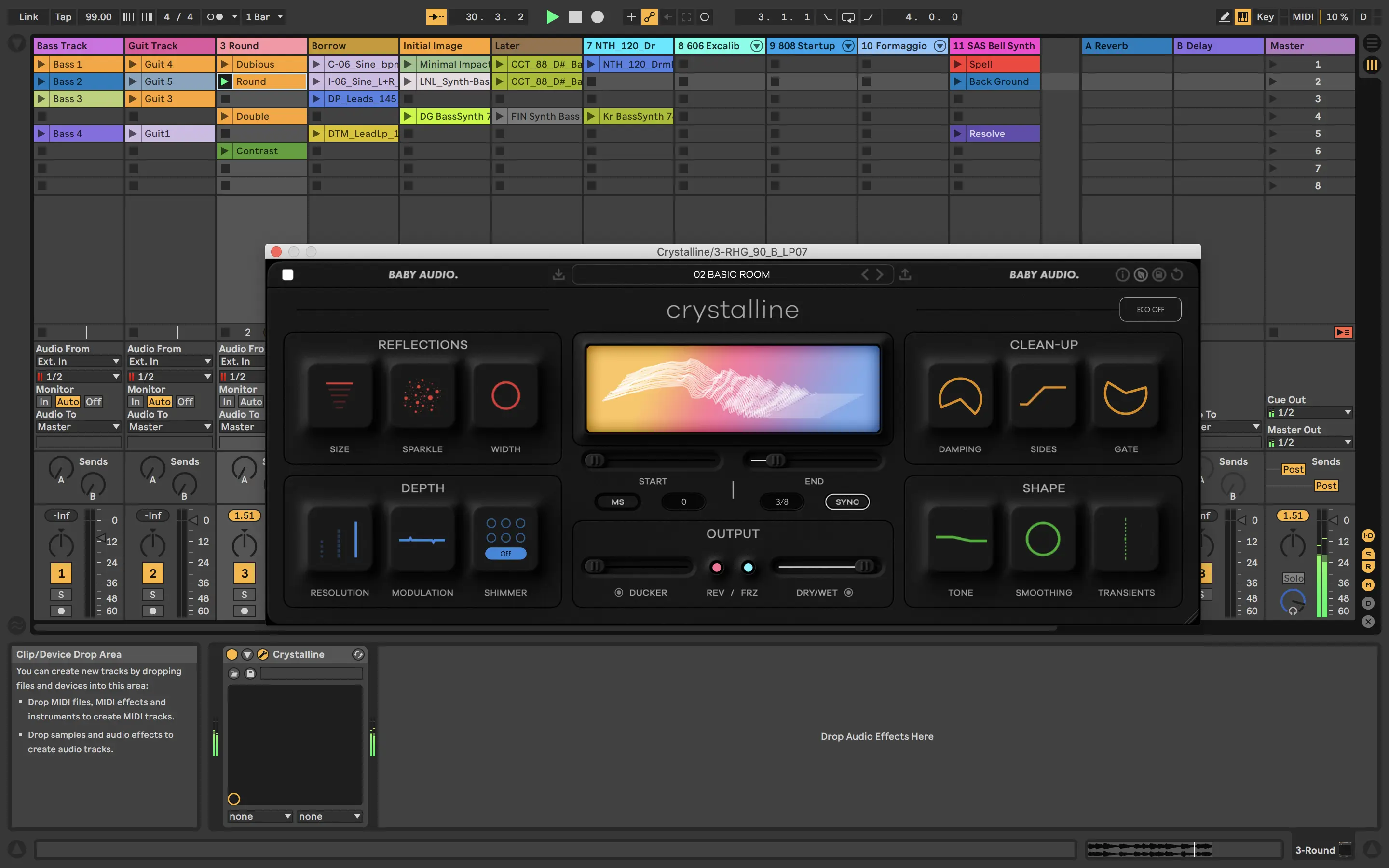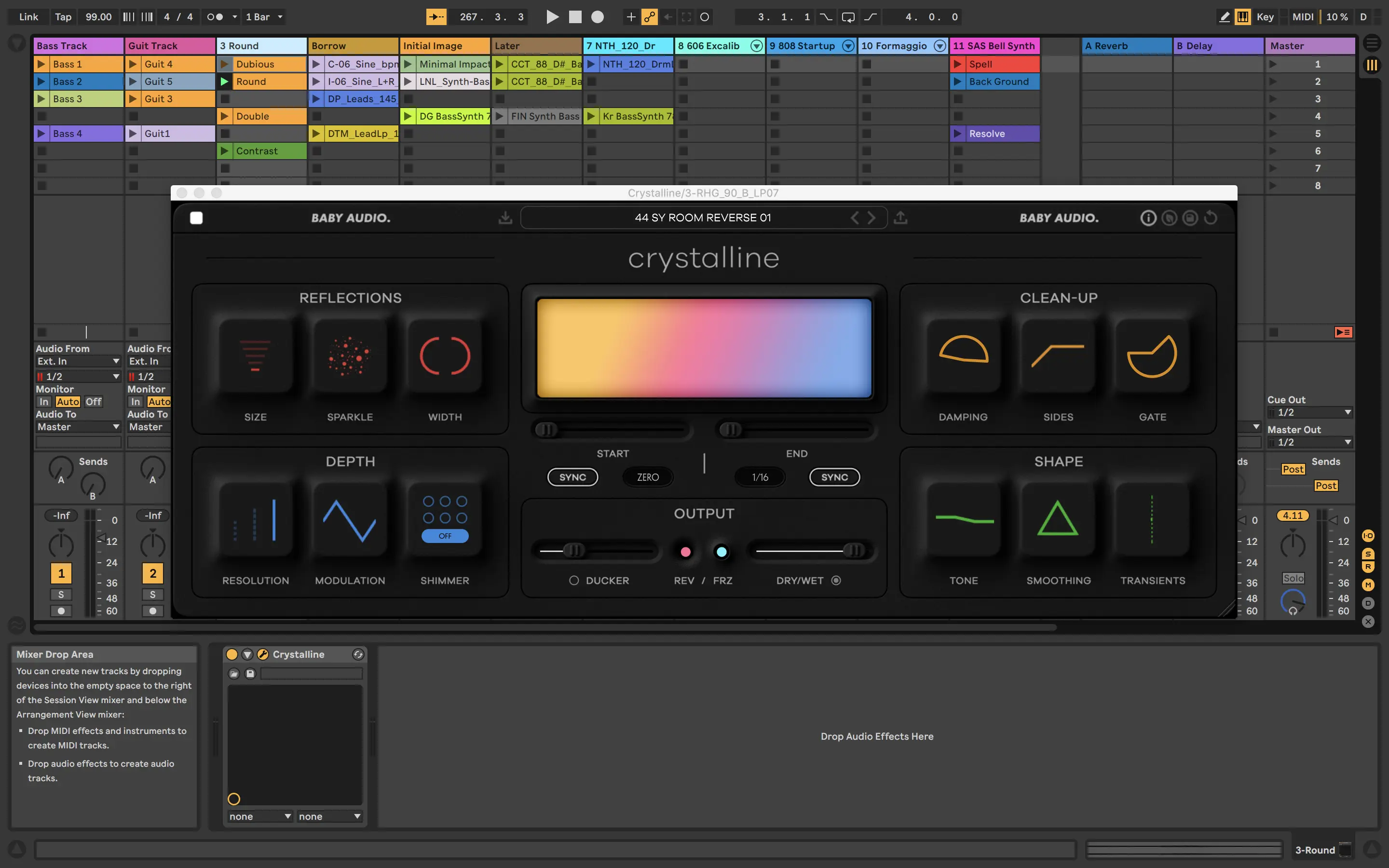Baby Audio Crystalline Review
- April 20, 2022
- by Brennan Galley
- Product Intelligence Report

Cueing Up
Crystalline by Baby Audio is a reverb plug-in that allows accurate targeting of stereo location and frequency range with modern and innovative tools.
When creating a sound scape, making the space work with all of the sounds in the mix is a delicate craft. Crystalline introduces new consideration when mixing reverb into your music. In this paid review I will discuss what I enjoy, how it affected my music production, and what I would improve.
What I enjoy
Crystalline delivers additional tools that you won’t find in other reverb plug-ins or reverb hardware. With creative audio engineering and mixing techniques some of what is delivered can be achieved using Auxiliary bussing within a host DAW and intentional placement of additional virtual eq’s and compressors. With these tools available up front in the User interface and as a hard-set signal chain, every detail is something that needs to be considered when shaping your reverberation sounds. I recommend watching the tutorial video or reading the manual to fully take advantage of its tools.
A rethink on reverb is due and Baby Audio allows growth in how you mix while simultaneously pays homage to vintage algorithmic reverb designs.
I enjoy UI visual customizations in plug-ins. Crystalline offers the ability to resize the interface and to change the colour scheme to be either light or dark. I have some notes in the “What I would improve” section of this article, but I wouldn’t have considered those notes, if Baby Audio had not provided a visually appealing and adaptive User Interface.
The most important consideration for a plug-in is how it sounds. I like the way Crystalline sounds. It is apt when used subtly, and creates a “moment” when applied heavily with a strong organized intent. Each section will take your mix to an interesting place and the way that each section is organized lends itself to a logical work flow. Pristine is a great descriptor for the top resolution setting available. When you pick Pristine you will hear many great details in the reverb that is generated.
How it has affected my music production
In my personal mixes reverb is not overpowering. I like to shape the room or the space to allow the instruments to breathe and use reverb as transparently as possible. I enjoy using reverb to allow lead instruments to pop through the mix. I enjoy using reverb to help distinguish different sections of the sound. The way that Crystalline approaches reverb makes it more tempting to change my minimal approach into a reverb prominent mix. Having the start and end time of the reverb behaving rhythmically while also having an assortment of tools available to rein in the reverb character has enabled me to move further into a lush but still tasteful reverb sound. I still find myself loading my favourite reverb plug-ins that I typically use. It is positive to now have a fresh set of tools that can help me to realign my approach and start to work on innovative reverb techniques.
I like to consider the vertical mix when producing a song and often think about how low frequencies sit at the bottom and high frequencies pop out over top. Using the Sparkle combined with horizonal width you can achieve a wider scope for instrument and frequency placement. With mixing I always like to create separation between sound and I will readily adopt any tool that delivers this.

What I would improve
My workflow would benefit from a snap shot selector in the Crystalline U.I. Having 5 or more snap shots to capture where you are in sound scaping, would allow multiple reference points for your work.
Going further with ths idea, having ramp-on and ramp-off time control for the assigned snap shots with the ability to control through MIDI, would add an accessible way to intentionally automate your mix over time.
I encountered one D.A.W. crash when I was flicking quickly through the resolution settings in Crystalline. According to Baby Audio Documentation this setting changes how the processor is addressing the data, so doing very quick changes like I did was perhaps unwise. My Ableton session allowed a reload without issue after a hard reboot.
A final request would be to have additional colours available for the User Interface. I am finding that I am using more instances of reverb now that I’ve introduced Crystalline into my pallet. Being able to have each instance matching the colour coding of my tracks would allow for a quick reference while preparing a session.

In Closing
Baby Audio’s Crystalline is a refreshing rethink to reverb. It was developed in a way that will suit very experienced Audio Mix Engineers and Producers, not only in quality of sound but also in its surgical approach. For people starting out in sound production, there is a great library of presets that will help you dial in your desired sound.
The benefit of an innovative reverb plug-in like Crystalline is that there is a brand new set of tools that can help re-imagine the mix. This will transcend into consideration of how other effects are applied. I look forward to seeing what other plug-in manufacturers imagine based upon Baby Audio’s approach.
Today there are many reverbs available. Even if you have a collection of other reverbs, I suggest checking out Baby Audio Crystalline. It can help breathe new life into how you apply and creatively use reverb within your mix. Right now, there is a 50% OFF intro promo running till May 31 2022. If you are reading this article after that date though, Crystalline is very affordable and very easy to Install.
Latest Music Software ReviewsAuthor

Brennan Galley
Brennan has travelled Canada Coast to Coast meeting musicians and talking about music equipment. He is a Journalist, a musician, a painter and an electronic technician.
He focuses most of his time on music. He is a classical pianist, a Ukulele group leader and a bass guitarist.